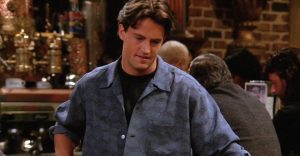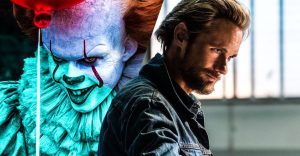10 Mistakes From The DCEU That The Batman Repeated

Warning: This article contains spoilers for The Batman (2022)
Robert Pattinson’s The Batman has been a welcome movie to join DC’s ranks after a near-decade, where live-action films have usually been under the DC Extended Universe banner. Its success should usher in different forms of storytelling, yet there are many elements from the DCEU to be found in The Batman as well.
While there’s more good than bad in Matt Reeves’ directorial effort, there are some problems from the DCEU that show up as well. These largely have to do with the style of storytelling and the way plot points were presented. With a sequel in the works, the mistakes from the DCEU should be eliminated by addressing them here to avoid the issues that plagued Ben Affleck’s run when he played the character.
Uneven Level Of Respect For Batman

DCEU’s Batman was introduced as a feared character, who was mistaken for a demon at one point by the police (whereas the Justice League showed him as just another hero, where cops barely even acknowledged him). This lack of balance leaves viewers confused as to how they’re supposed to perceive the protagonist since there isn’t enough continuity.
While there were certainly scary aspects about Robert Pattinson’s Batman, people around him also openly called him a freak. It took away from his overall fear factor since people could insult him to his face without feeling intimidated, while Batman’s classic persona is such that he commands respect simply through his presence.
No Reason For The Bruce/Alfred Estrangement

DCEU’s Alfred carried an attitude, where he appeared to be done with Bruce’s antics, with the latter largely dismissing Alfred’s advice in return. Alfred and Bruce’s estranged relationship was never explained, and they just went about sniping at one another.
Similarly, The Batman had Bruce be rather hostile toward Alfred, claiming the latter wasn’t like his father. Although Alfred blamed himself for Bruce’s orphanhood, it wasn’t an explanation over why they were distant. The ambiguity of the scenario isn’t ideal because the Bruce/Alfred dynamic is a vital ingredient in the Batman formula, so the issues between them at least need to be addressed.
An Excessive Runtime

DCEU movies like Zack Snyder’s Justice League and Batman v Superman carried massive runtimes in a genre generally known for shorter lengths. It’s been addressed in recent times, where DCEU films are largely shorter to avoid bloating out too much of their screentime.
The Batman repeated earlier DCEU works’ template by running at nearly three hours, but a lot of the content could easily have been cut. Things like multiple visits to Falcone’s lair and repeated Riddler messages weren’t needed, also carrying the effect of losing focus on important pieces of the narrative by addressing subplots.
Crucial Plot Points Left Unresolved

Even with the long runtime, there were several questions left unaddressed in The Batman. These range from the lack of clarification over if Falcone was the one who ordered the hit on the Waynes to what the endgame of The Riddler was supposed to be.
It was a repeat of DCEU movies’ practice of leaving plot points unresolved, such as the tease of Superman’s resurrection, the supposed return of Darkseid, and Bruce’s deal with Amanda Waller. Although The Batman will be getting a sequel, fans still shouldn’t be expected to speculate about the plot when they’ve followed the story from start to finish.
No Indication Of How Bruce Became Batman

The movie adapted Batman’s fighting ability wonderfully well, with the Caped Crusader taking on multiple people at once. However, the origin of his time as the Dark Knight wasn’t expanded upon apart from Bruce’s monologue at the beginning of the movie. The DCEU had similarly skipped to Batman being a seasoned superhero upon introduction, with just a flashback to his parents’ deaths.
The Batman repeated the DCEU’s mistake of not establishing how he came to become such a brutal person since these two versions of the hero are the grittiest. The film needed justification for his excessive force, which wasn’t provided in the DCEU until a very late reveal of Joker’s killing of Jason Todd as the true reason.
Batman’s Supervillains Already Seen Captured

Part of the attraction of checking out a new Batman movie is to see him take down the classic villains after figuring out what drives them. However, the DCEU began with Batman already having defeated the likes of Penguin, Bane, and even The Joker, deriving fans from these match-ups.
The Batman’s climax revealed that The Joker was already incarcerated at Arkham, meaning he’d either been caught by Batman already or an average cop had overpowered him. Either way, the aspect of Batman being the only one who could overcome his rogue’s gallery has been taken away.
An Ambiguous Ending

The conclusion to films like Batman v Superman and Zack Snyder’s Justice League provides no definitive ending, with both films showing Bruce contemplating about the future of the league (yet things like the Martian Manhunter’s inclusion and Bruce’s plans with Amanda Waller never came into fruition).
Similarly, The Batman signed off with Gotham City in peril after it was flooded by The Riddler. Moreover, Batman’s new take on being a symbol of hope was only teased since his narration claimed he was unsure how he would go about it. Ambiguous endings have become far too commonplace in the superhero genre by now, and new entries like The Batman are better served with complete endings that leave fans fulfilled.
Villains With A Lopsided Sense Of Justice

Batman antagonists traditionally are aware of their villainy and conduct their activities for selfish reasons. However, The Batman showed The Riddler genuinely believing that he was serving the community through his form of vigilantism (which is an interesting take but is an element that’s been done far too many times in recent years).
The DCEU is a clear example, which has movies like Batman v Superman, where Lex Luthor thinks he’s proving there’s no god through his antics, and Suicide Squad, which has Harley Quinn and the team in a sympathetic light. Audiences won’t fully appreciate the heroes’ efforts when villains aren’t totally dedicated to their antagonism, so Riddler’s ambiguous mentality in The Batman might have been a mistake.
Lack Of Characterization For Bruce Wayne

DCEU Bruce Wayne’s mentality wasn’t detailed until Justice League, with Bruce largely conforming to his attitude as Batman. However, the series usually shows Batman and Bruce as two personas, so the fact that both identities behaved the same way wasn’t as appealing.
There have been great fan reactions to Robert Pattinson’s Batman, yet his Bruce Wayne was lacking. His civilian identity was barely in the film either, leaving Batman as the primary persona. Fans need to understand how Bruce is perceived in general and the way he acts without the cowl, with the DCEU and The Batman not measuring up here.
Slow Pacing Of The Story

The DCEU has greatly improved on its films’ pacing, with new entries carrying a steadier style that rarely leaves out room for boredom. However, the initial movies could be quite a chore to sit through, with Batman v Superman one of the biggest examples, as viewers were annoyed with so many scenes where people spoke in circles.
While The Batman deserves praise for bringing in heaps of tension, there were several scenes where the pace was dragging. Even certain chase and fight sequences were stretched out to the point where it looked the film was going through the motions. A quicker pace keeps viewers invested throughout the story despite a longer runtime, so that’s a point The Batman’s sequel needs to incorporate.
About The Author


















